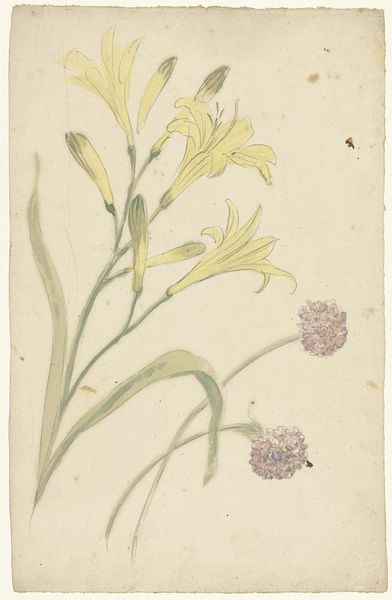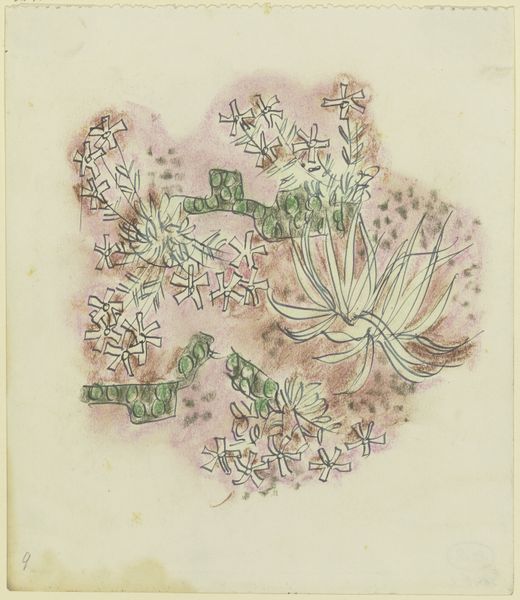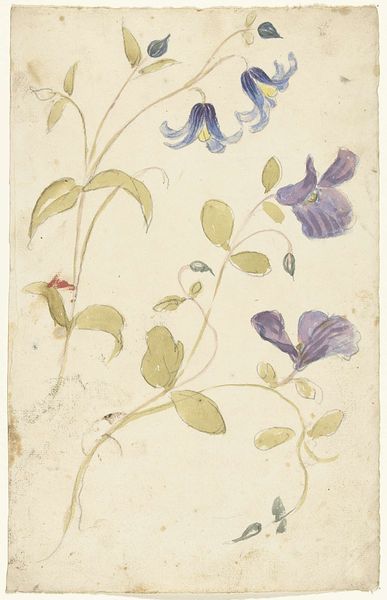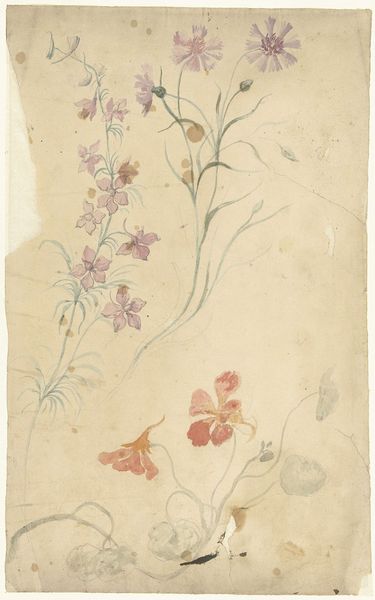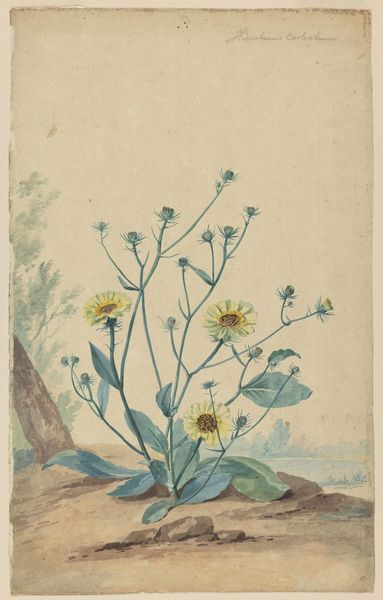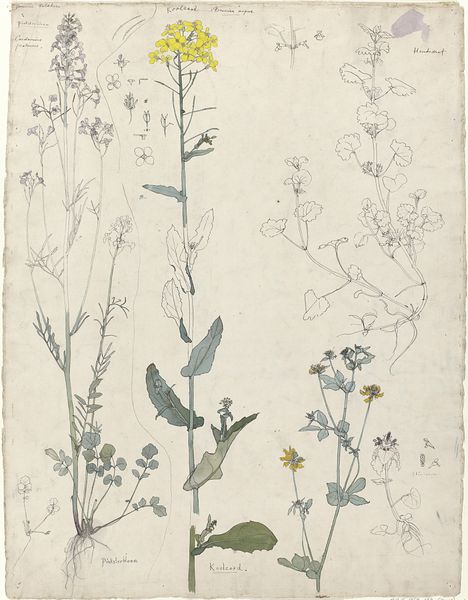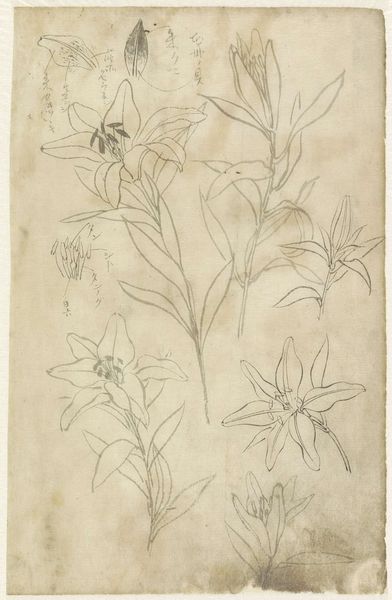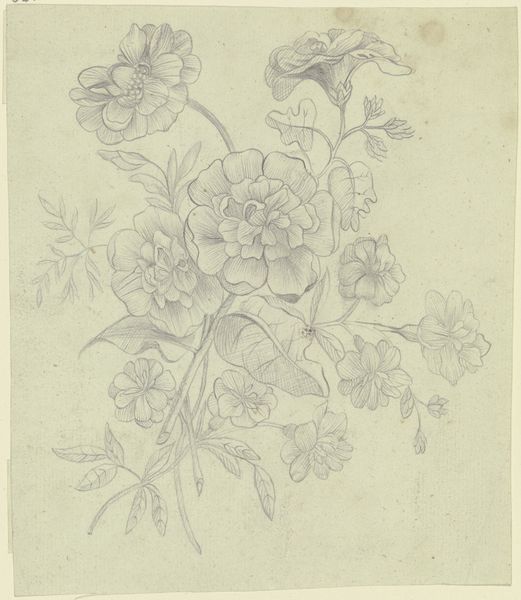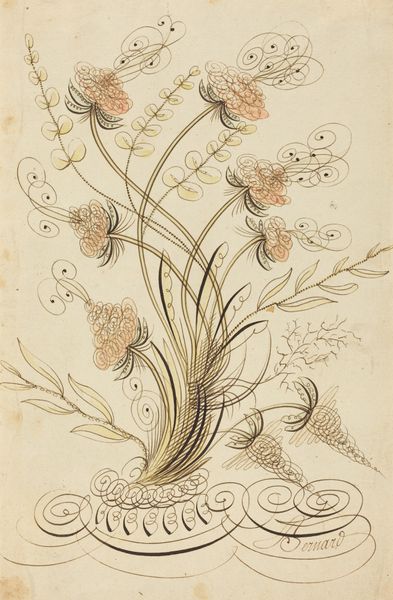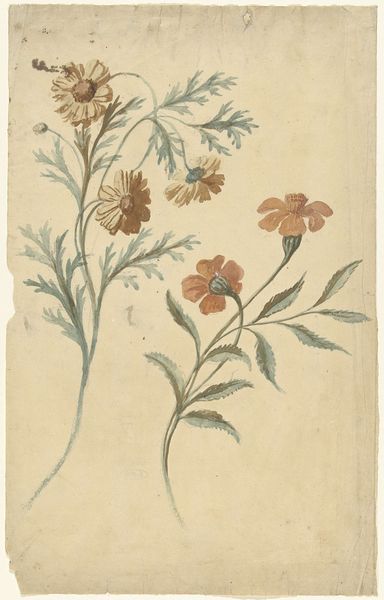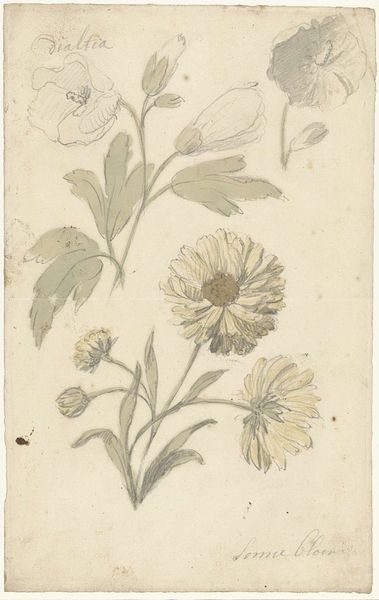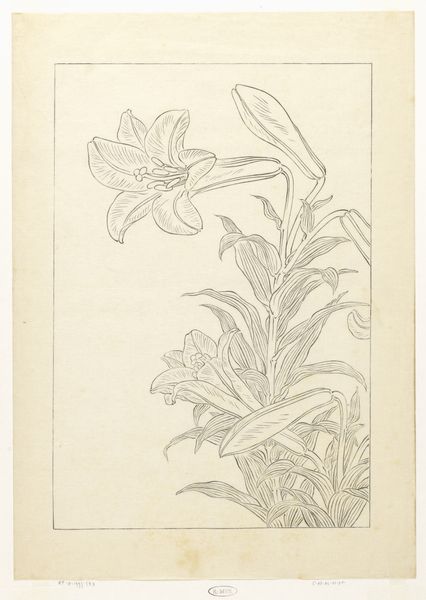
drawing, watercolor
#
drawing
#
baroque
#
dutch-golden-age
#
watercolor
#
botanical drawing
#
botanical art
#
watercolor
Dimensions: height 327 mm, width 205 mm
Copyright: Rijks Museum: Open Domain
Editor: Here we have "Study of a Yellow Tulip and Another Plant" by Elias van Nijmegen, dating somewhere between 1677 and 1755. It's a watercolor and drawing, a rather delicate botanical study. What jumps out at me is the fragility of the materials and the detailed, almost scientific, approach. How would you interpret this work? Curator: Given my materialist lens, I'm most interested in the circumstances of its creation and consumption. Watercolors and drawings like these were not simply "art." Consider the price of pigments at the time – some colors were far more expensive than others, hinting at the resources available to Nijmegen and his patrons. Who would have commissioned or purchased this work, and what purpose did it serve in their lives? Editor: So you’re saying the cost of the materials impacted who could create and own such a work, therefore influencing the subjects represented and artistic development overall? Curator: Precisely. Tulip mania was also still within living memory. The image may act not only as a scientific or aesthetic study but could simultaneously evoke the rampant market and speculative anxieties of the recent past. How does that inform the viewer's interpretation of beauty and value? The making of images isn't neutral. Editor: That’s a compelling connection that the materials used, like the watercolors themselves, had socio-economic significance beyond the image they helped create. I never considered it that deeply before. Curator: It prompts questions about the art market then versus now and our role in either reinforcing or challenging the commodification of art. These issues around labor, value, and social hierarchies within artistic practice remain current concerns.
Comments
No comments
Be the first to comment and join the conversation on the ultimate creative platform.
